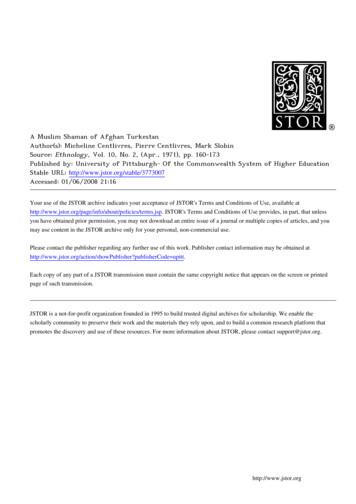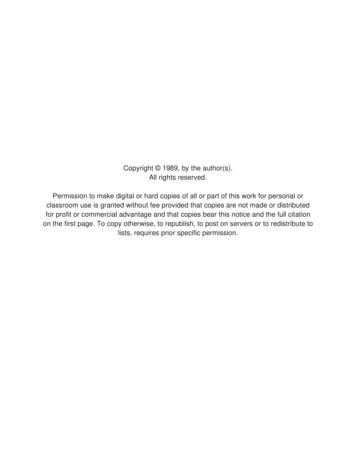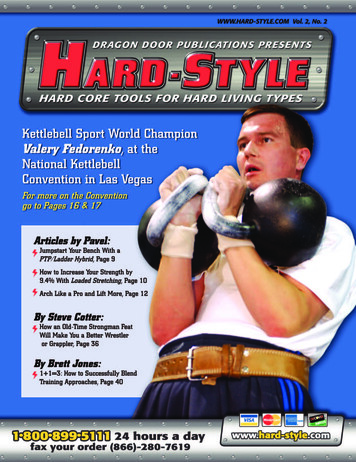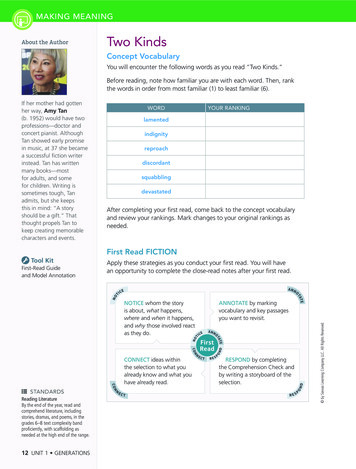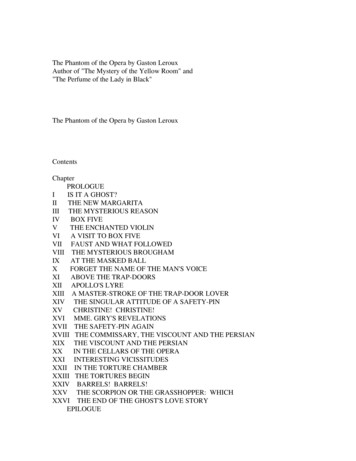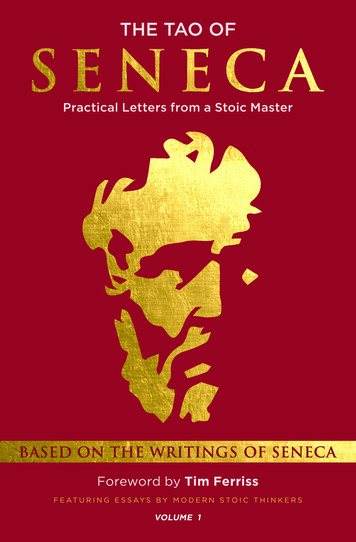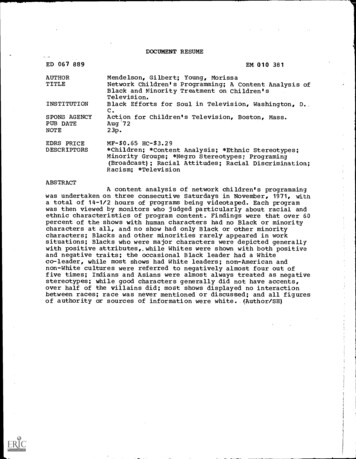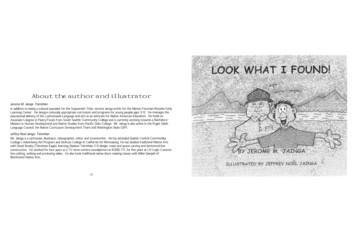
Transcription
About the author and illustratorJerome M. Jainga- TsimshianIn addition to being a cultural specialist for the Suquamish Tribe, Jerome Jainga works for the Marion Forsman-Boushie EarlyLearning Center. He designs culturally appropriate curriculum and programs for young people ages 3-12. He manages theeducational delivery of the Lushootseed Language and acts as an advocate for Native American Education. He holds anAssociate's degree in Pastry/Foods from South Seattle Community College and is currently working towards a Bachelors/Masters in Human Development and Native Studies from Pacific Oaks College. Mr. Jainga is also active in the Puget SalishLanguage Council, the Native Curriculum Development Team and Washington State OSPI.Jeffery Noel Jainga- TsimshianMr. Jainga is a cartoonist, illustrator, videographer, editor and screenwriter. He has attended Seattle Central CommunityCollege's Advertising Art Program and DeAnza College in California for filmmaking. He has studied traditional Native Artswith David Boxley (Tsimshian Eagle), learning Alaskan Tsimshian 2-D design, mask and spoon carving and bentwood boxconstruction. He worked for four years as a TV news camera soundperson at KOMO TV, for five years at LSI Logic Corpora tion editing, writing and producing video. He also took traditional native drum making classes with Mike Dangeli ofNorthwind Native Arts.23
I was happy to see what I found inside, andcan't wait to have one too@ 2002This book was developed by the Northwest NativeAmerican Curriculum Project, sponsored by TheEvergreen Center for Educational Improvement at TheEvergreen State College and the Office oflndianEducation at the Office of the Superintendent of PublicInstruction. The project was partially funded by theWashington State Higher Education Coordinating Board.III ,l')Il\\\.\\.\I\)I\.\IIIIt, I,,)
I am glad Granddad tool( me to the beachtoday. I really lil(e seeing the canoe.----·-·''.II'f'II'IHistoric Skokomish canoe from the Skokomish Tribal Center.
My granddad tool( me to the beach today,and look what I found!Look what I found in the canoe.-- i--,-. II. ,,. . . . . . . . . . · .- ·. :. - -· · r-··---:·: -: : -. ; .-·. - - .·;-' .-. :. . -. -r . -- \·- .-. .-. . ."A canoe," I yelled. "A canoe!" Granddadtold me lots of stories about canoes. ,-II' l ''\I'T\\\\\l\II IITI\ I.III\ 1111rI II \ \ TY \ \ \\\\l\\\11,\\\\\\\\\\\ .II\T\\11,-,,I\ \ l. \ \ l \\\\1\H\\ \ \\\\ \I \I--.I.'II II IrII---,-IlT \ \TII ''\ \ '\\\\\ \ \ \ \ \ \ \ \ \ \ \ \ \ \.,I II I\III\I \II'\A cedar bark mat!III----
In the front of the canoe I saw something rolled up,and really fat. Granddad took and rolled it out on theground so it was laying flat.s.:;······ ·· "A cedar bark mat, " he said, "to sit on, and protectthe canoe, in fact "I raced ahead to see the canoe,
Look what I found in the canoe.and lool( what I found inside!A pole!
On the floor of the canoe was a long roundpole, made out of wood.( ( l(l(ll l ( t.l l(Lll LL l(L l l \ l l. l Ll l llll'l l l'lL \.\\ \ll(.1l l l .\\Granddad said the people would use the poleto get up the shallow rivers when they could.
A scoop, made of woodwith a handle on the end."A bailer," Granddad said. "A bailer, to bailthe water out that always splashes in.Look what I found in the canoe!A paddle!
Look what I found in the canoe.L\l\l\\\ l \\1 1\l 'I\\\ flI ll \I \I I 11,( ( ( ( ( ( l { l ( ( { ( (((((l \ Il(llLl l(((.l IL Ll \ l ll \. \1}.,.&::::r-rlWhen I lookedagain, I saw apaddle at the stem.II really would have fun with one,paddling on my tum.A bailer!t1,,1
As I looked inside the canoe, I saw somethingthere that I knew.(l((Look what I found in the canoe.'-(.\l\l(l-"A rope," I told Granddad. "Just like you toldme. Made of cedar bark and twisted, too!"A bentwood tackle box!See Nan McNutt's The BentwoodBox p. 33 for a traditional bentwoodbox for canoes.
Granddad smiled asI looked insideonce more. A tri angle box, made ofwood, was on itsfloor.Lool( what I found in the canoe!"What's that?" I asl(ed Granddad, as he picked it upjust so.''This is a special bentwood box, you know. Thepeople would put stuff in the box to keep it safe asthey go."A cedar rope!
I took aquick look inthe canoe once again,and found abig heavyrock with ahole drilled inone end.Look what I found in the canoe.''An anchor," Granddad said. ''An anchor tostop the canoe from always drifting in.''· ·An anchor!
with David Boxley (Tsimshian Eagle), learning Alaskan Tsimshian 2-D design, mask and spoon carving and bentwood box construction. He worked for four years as a TV news camera soundperson at KOMO TV, for five years at LSI



